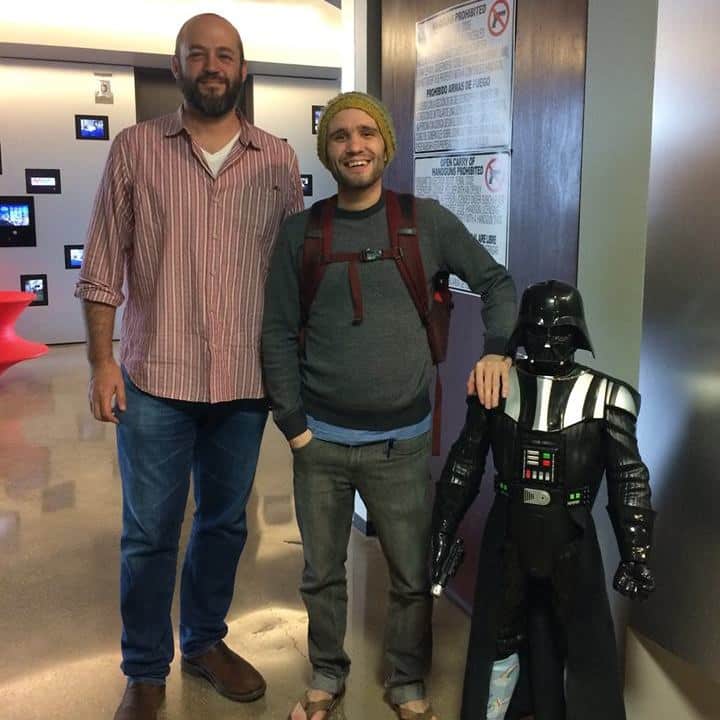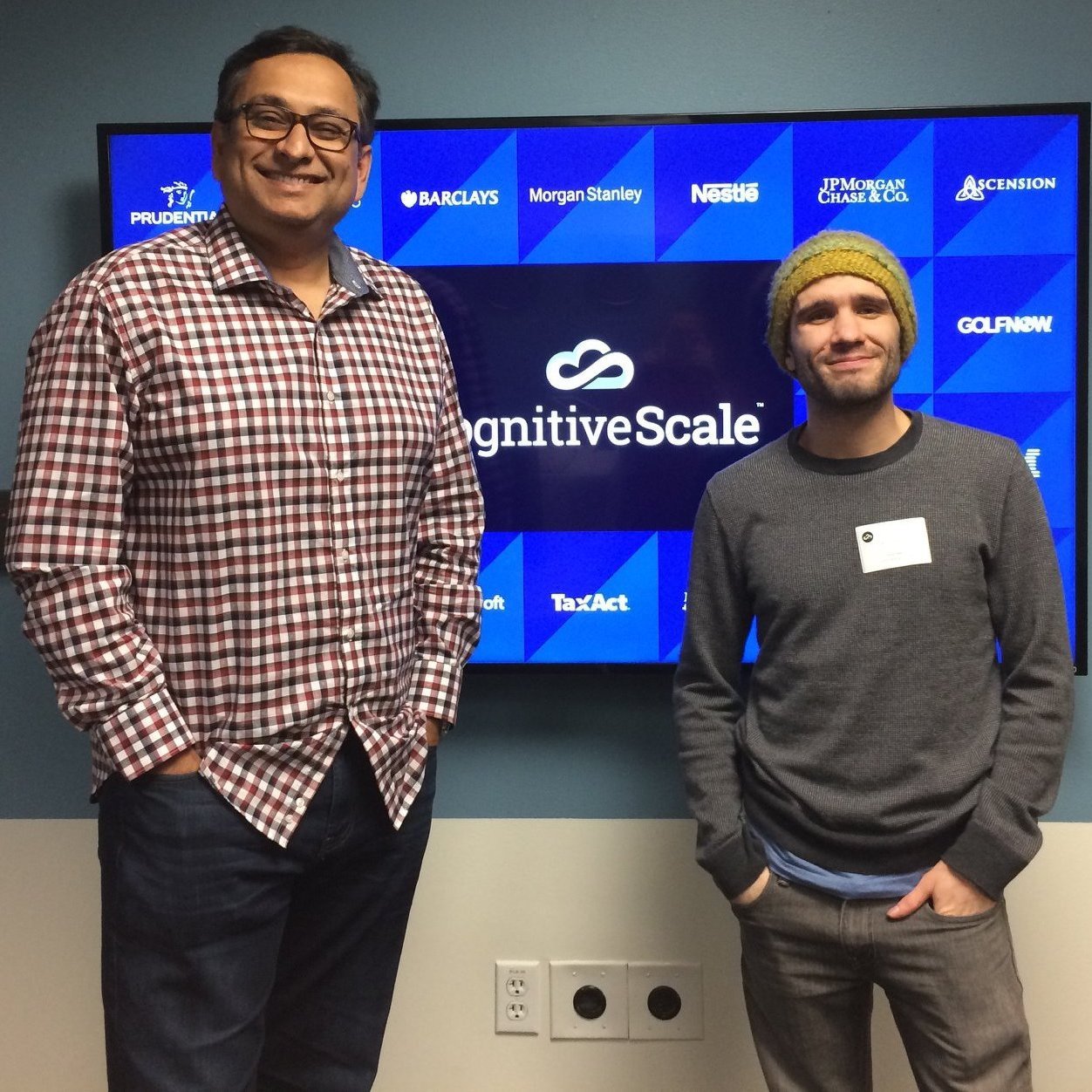
Back at the beginning of the year, I set out to get a feel for a city in the longitudinal center of the country, between two coastal tech hubs in San Francisco and NYC: Austin. I wanted to find out what made Austin an attractive AI and tech hub the way I had in Boston, Atlanta, Montreal, and Bangalore before it. It turns out the AI startup community in Austin is measurably different than those on the east and west coast, and it stood out to me in the way it was able to offer a quality of life that’s rare for fresh-out-of-college talent on the coasts.
On my trip, I set out to answer the following questions:
- How much traction do artificial intelligence companies have in Austin?
- What makes Austin appealing for AI talent and startups looking to get off the ground?
- How does Austin’s culture influence its startup community, and what makes it different from North America’s more well-known tech hubs?
The article below is broken out into the following five sections:
- How the AI Ecosystem in Austin has Changed in the Last 2-3 Years
- The Advantages of Austin as a Tech and AI Hub
- The Disadvantages of Austin as a Tech and AI Hub
- Venture Capital In Austin
- How Austin’s Local Culture Influences Startup Life
- How Austin Startups Attract AI Talent
How the AI Ecosystem in Austin Has Changed in the Last 2-3 Years
The prevailing sentiment seems to be that Austin saw a dramatic increase in AI interest around 3 years ago, less a gradual adoption and more a meteoric rise. DeepGrammar’s Jon Mugan suggested that this is the result of the dawn of deep learning, which greatly increased the capabilities of machine learning software across the board. I’d surmise he’s right on the money. Nowadays, machine learning software that does not require the breadth of computing power required for deep learning has mostly gone mainstream, having made its way into some of the largest sectors, including banking, finance, and healthcare.
AI is no longer a niche concept, but as Mugan put it, people actually think it’s “cool.”
Valkyrie Intelligence’s Charlie Burgoyne shared his experiences with teaching firms about AI integration and how the landscape has moved away from talent with business backgrounds to those with hard science laboratory experience. Again, this change came in a relatively small period of time.
Some of the bigger firms that are based here in Austin are adopting technologies and disciplines that were proliferated 2-3 years ago by the smaller startup community, and now they’re adopting those in their own way.
Maybe 3 years ago they were looking for people who focused on business intelligence who could develop descriptive analytics that could potentially be predicted. Now they’ve wholly embraced these relatively esoteric scientists to bring on to focus on prescriptive and descriptive analytics.
Maybe 3 years ago if a CTO or CEO had the option to be hiring somebody with 17 years of working as a quantitative-based MBA and 3 years of Python experience over someone who had 17 years of government lab experience and 3 years working in the private sector, They’re gonna go with choice A every time. If data science doesn’t play out, then likely this candidate will be able to help us in another function. They’re now turning more towards and appreciating the second role can be much more profitable for them.
Executives used to the business world may still lack the appreciation for the methods scientists use to solve problems and for the complexity of data science itself. At the same time, they’re looking to recruit scientists into their business expecting fast results. Unfortunately, that’s not how it works. Burgoyne believes the most effective way to onboard AI specialists, real scientists, is to start slow, hiring one AI expert who can share space with a domain expert over the course of a couple months so they can best train the machine learning systems they’re hired to integrate.
At the same time, Storyfit’s Monica Landers told me she spent most of her time educating staff 3 years ago, but now it’s “straight to business.” In other words, new hires are more likely to already have a grasp of basic AI programming and functionality.
The Advantages of Austin as a Tech and AI Hub

While the people I spoke to all acknowledged the difference between Austin and tech hubs such as San Francisco and New York in terms of available talent and capital, they all seemed to appreciate Austin for its relatively low cost of living compared to those cities. Despite this, the talent that is imported into Austin seems to find itself with a higher standard of living: large houses and backyards.
Also, the University of Texas Austin provides the city the kind of energy one might expect from a college town. “If you like Texas, but want to be hip, you live in Austin,” said Mugan.
Although many recent computer science college graduates might find themselves eager to move out to the coasts, John Shaw of ele.ai suggested that “people want to be here. Most people who go to [University of Texas] don’t leave Austin.” In the same vein, Bryon Jacob of data.world felt that a relatively good quality of life follows residents throughout their lives. He said Austin is a place that is “cool to work hard and have fun in your 20’s and cool to buy a home and raise 4 kids.”
Shaw adds that the University of Texas Austin has been a leader in AI for a while, “always ranked in the top 5-10 departments in the world.” There is a real sense that AI is beginning to play a more foundational role in startups coming out of Austin. Shaw said AI has gone from “a science experiment back-of-the-room deal to a prevalent element of the business landscape.” Sandeep Verma of New Knowledge feels Austin is great for companies looking to hire talent, and Bruce Porter of SparkCognition said he’s set a goal to hire 7 additional team members focusing exclusively on a facet of AI known as machine perception. He claims SparkCognition has around 18 team members focused solely on machine learning.
The Disadvantages of Austin as a Tech and AI Hub
Unsurprisingly, the majority of the people I spoke with mentioned the relative difficulty involved in raising money in comparison to the Bay Area. On top of that, according to Verma, there are a lot of companies that are only claiming to do AI without having the data scientists backing up that claim. In other words, they’re faking it. He said, “People are aware that it’s a buzzword and they play it out more than they should.”
This combination has Austin-based investors jaded about the AI hype. They’re looking for companies that have data science baked into the core of their product or service, backed by PhDs, and they’re looking for a demo of some sort.
Jacob relayed his experience with venture capital in Austin (or lack thereof):
As a well-funded startup that’s really growing and getting a lot more well-known…I have to spend a certain amount of time in the Bay Area. This isn’t as much about talent access; there is plenty of talent here. Fundraising is going to involve a trip to Silicon Valley. You need an investor from outside Austin if you’re raising a large round. We’ve found that investors from outside of Austin, such as Shasta and Chicago Ventures, our first investors, seem actively interested in getting connected to the Austin market.
Shaw and Justin Turner of ele.ai echoed something similar:
We have to fly to both coasts to do business and raise money. By B-round you’re touching out-of-Austin money for sure. Angels are okay. The density of companies to do business with is smaller…there are campuses but not the concentration of companies.
With regards to the campus, not everyone I interviewed was as excited about access to the University of Austin. Mugan said, “I haven’t seen a ton of interaction between UT Austin and the local ecosystem. People tell me in Boston much more integrated. It’s possible I’m just missing it.”
The AI leaders I spoke with weren’t entirely optimistic about the state of venture capital in Austin. Perhaps as expected, the trade-off for a lower cost of living is the inconvenience and difficulty of having to travel far out of state to acquire funding. This is something that may prove challenging for startups coming out of Austin without the means to make several trips to the coast.
Venture Capital in Austin
That all said, Landers suggested that there is money in Austin, “more and more,” in fact. Austin AI startups have

raised a collective $100 million. However, a couple of the AI leaders I interviewed mentioned that Austin Ventures, one of the leading venture firms in the city, closed down. Jacob said he couldn’t raise another round due to the closure. Manoj Saxena of CognitiveScale also referenced Austin Ventures when he discussed how Austin lacks growth capital, but that “it’s coming back,” perhaps a result of the startup community and the AI talent that’s congealing in the city.
Saurav Agarwal of Stocked Robotics. compares the city to San Francisco:
“For institutional money there’s more in Bay Area than Texas… and more ability to accept risk.”
However, he provides an important glimpse into one of Austin’s defining features with regards to a startup’s ability to raise funds. He adds:
“That being said, Austin has a great ecosystem of angels…some of the biggest angel networks in the country. Some good seed and A-round money is available.”
Although there are currently less venture capital firms in Austin (and those that exist take less risks with who they fund), angels seem to be the saving grace of the fundraising community in Austin.
Not only that, but as Landers put it, “with a lower cost of living, raising money goes twice as far in terms of runway.” In other words, angel funding could secure startups for quite a while. This lies in opposition to the venture ecosystem in places like San Francisco, where high-risk startups can often find themselves a fast path through their fundraising phases only to require more to stay afloat.
Perhaps this combination of secure investments and low cost of living contributes to the culture of the Austin AI community, one which seems to be in direct contrast with coastal tech hubs.
How Austin’s Local Culture Influences Startup Life
Verma said that what he found “redeeming” about Austin, despite its relative lack of venture firms, is its “culture of innovation” and “ambitious population.” He also mentions that although startups may have a harder time acquiring funding in Austin, those that do “tend to be much more grounded” and “have a strong future…there tends to be an effort on building revenue and having a near-term future.”
Again, the difference in the cost of living between Austin and coastal tech hubs like San Francisco and New York cannot be downplayed. Agarwal said that although he looked at San Francisco and Boston after he graduated from Texas A&M, he decided on Austin because it was “cost-effective” and “business friendly.” Landers echoed a similar sentiment: “On a personal level I love the coasts. From a business perspective, there’s a lot of reasons to be here. I can raise money; I can sell to both coasts…I can have a company of happy people.”
The business leaders I interviewed brought up the coasts often, comparing Austin to them from both the personal and business sides of the coin. Turner brings these sides together when they say “Geographically, we’re well situated to take calls from both coasts…and we have the lifestyle of Music, lifestyle, tech scene, SXSW.” Agarwal also lists the culture as a reason he enjoys working in Austin. He calls it “a young, beautiful melting pot of foods, music, and talent. I think that’s what makes it an amazing place. The people here are super friendly.”
Indeed, Austin seems to be much more laid back than the coastal tech hubs, which its AI leaders truly seem to enjoy. Landers said she has clothes that she only ever wears on the coast when she’s trying to impress investors; she dresses much more casually for work in Austin. In fact, many of the people I interviewed appreciated this more relaxed culture that, coupled with the low cost of living and high standard of living, creates to them a very high quality of life.
Landers said the hippie culture that thrived in Austin echoes out to today. According to Landers, the air of this culture works in conjunction with the students that come out of UT with computer science degrees to create a desirable atmosphere for tech companies. “Tech is science plus creativity, and Austin fuels that creativity,” she said.
Saxena seems to agree:
I think we’ve always had a history of the creative side in Austin. There was always the bohemian hipster part that was rooted in the creative arts: music, painting, digital gaming, multimedia. Now the software guys are realizing they need the right side and left side of the brain to come together to really build beautiful AI. I think that’s where the power of this community is going to come through.
How Austin Startups Attract AI Talent
From the sound of it, the talent pool in Austin is made up of UT graduates and talent which is sometimes imported from the coasts. Wages in Austin aren’t exactly what they are in San Francisco, New York, or Boston, and so attracting fresh talent with strong credentials can be challenging. Instead of wages, business leaders say they can offer potential employees an increase in their quality of life. Landers suggested the following: “being able to get to work on the bike…hav[ing] a home with a nice backyard… still [having] a good wage…and exciting career opportunities.”
Real estate can cost hundreds of thousands of dollars more in coastal tech hubs than it does in Austin, and so fresh, especially young talent may look to Austin for starting a life. Landers’ last 3 data science hires were from California, and so clearly there’s an appeal to what she describes.
On the other hand, Shaw sees the limitations of the city with regards to attracting talent. According to Shaw, Austin is a city that would attract a data science who isn’t “looking to make 400k a year.” This is a certain type of person, one who will forgo a large salary for a culture that’s more their speed. Landers admits Austin startups can’t offer top wages, and as a result, Shaw estimates there are only around 30 “creme of the creme” data scientists working in Austin.
Conclusion
What I found so interesting about the Austin AI ecosystem was the emphasis on culture in a way that reminded me of Montreal. In fact, Shaw called Austin the “Montreal of the states,” and it makes sense. The startup communities of both cities seem to revolve at least in part around their universities. For Austin, that’s the University of Texas. Like it’s supposed northern counterpart, Austin also prides itself on its artistic history: its hippie culture and acts like Willie Nelson and Stevie Ray Vaughan. The AI leaders I spoke to referenced their city’s culture as an advantage, an access point into the AI startup community that makes it unlike coastal tech hubs.
Header Image Credit: Imagesfromtexas.com






